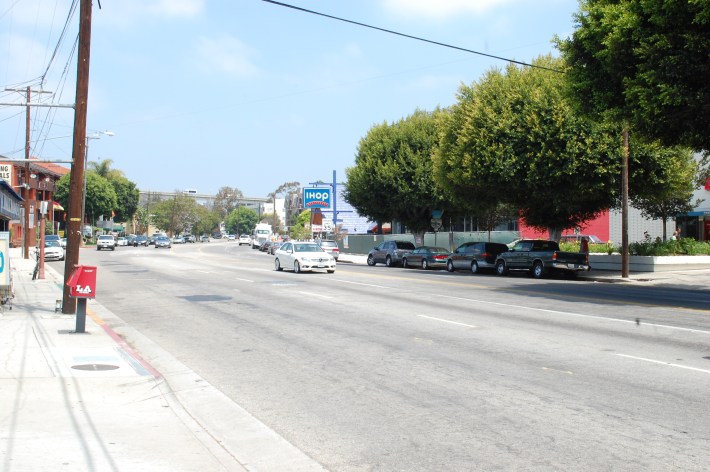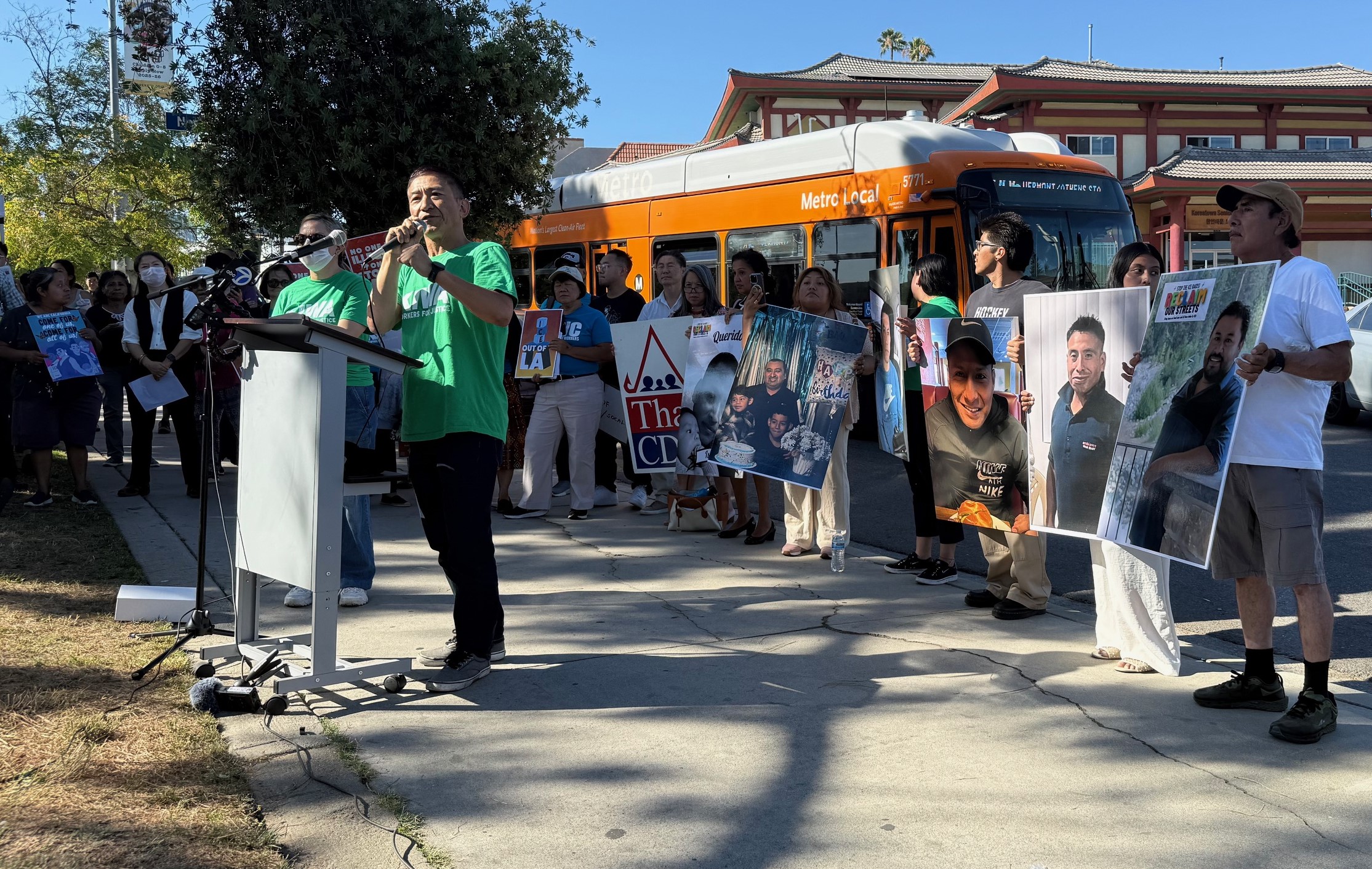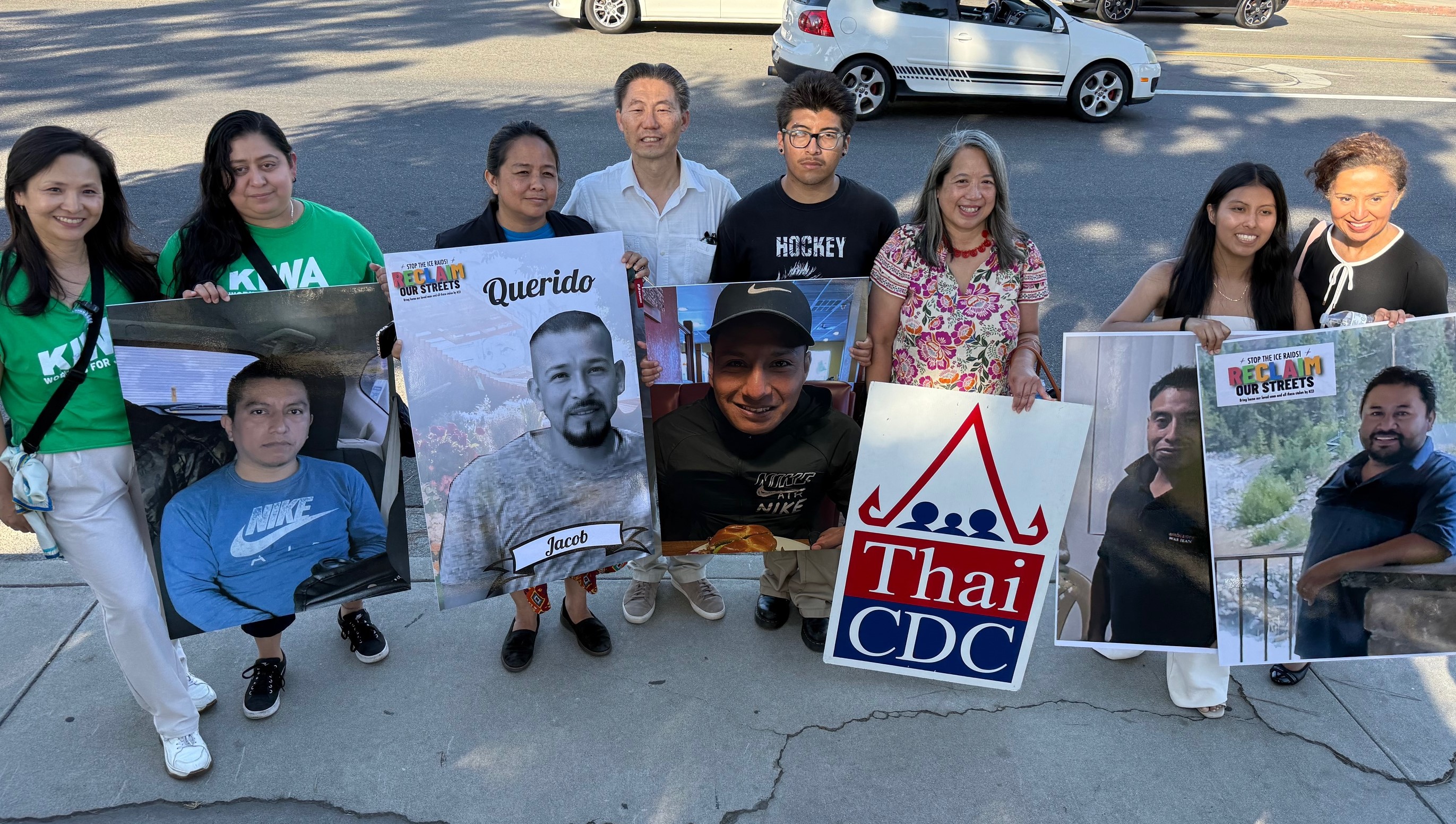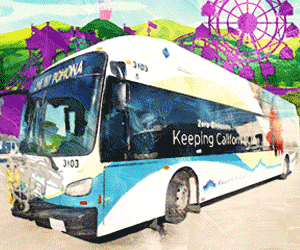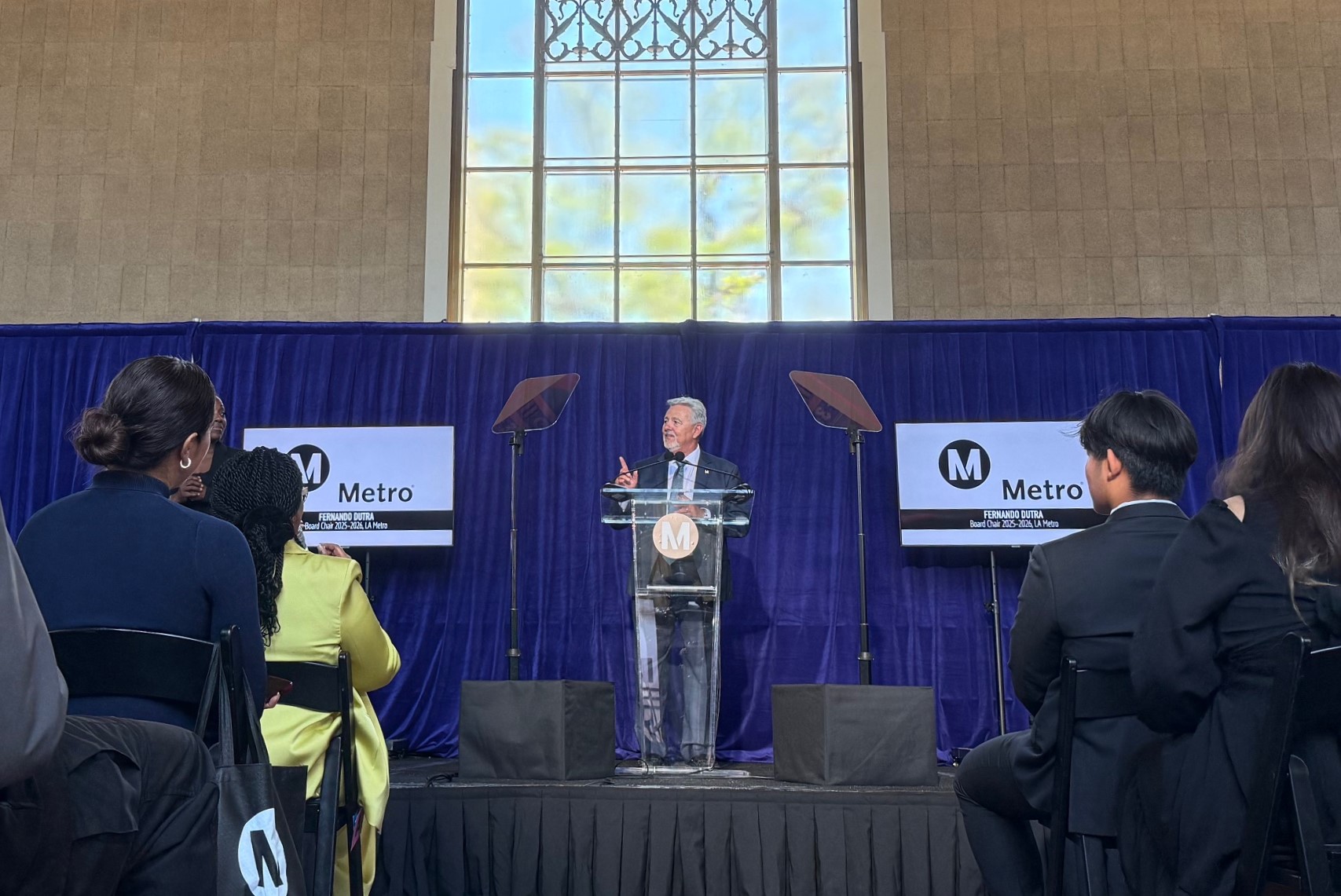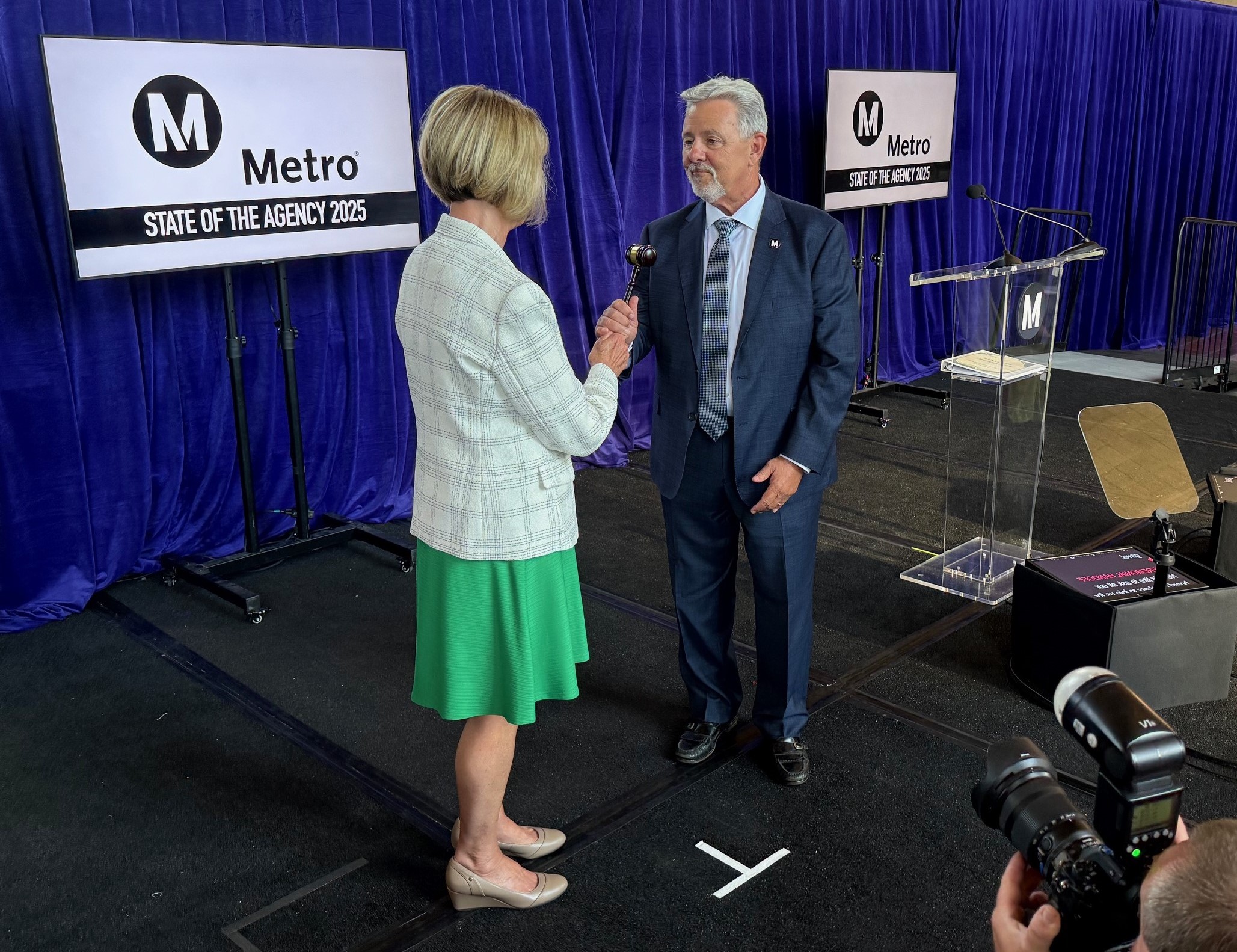Bicycle advocacy in the city entered a new phase last week, when the Department of City Planning released a five page Notice of Preparation (NOP) for an environmental review of forty three miles of bike lanes. These projects represent some of the more controversial bicycling projects as they often times require removing curbside parking, mixed-use travel lanes, and/or turning lanes. The public process, which begins with scoping meetings next week, could prove to be contentious as this is the first time the City of Los Angeles has publicly proposed a city-wide program of creating bicycle facilities at the cost of mixed-use facilities or automobile parking.
Just because a bike project is being studied doesn't mean that it will be implemented," reminds Joe Linton, a long time bicycle advocate and head of the new group BIKAS. "It's critical that bicyclists track these projects and build community support to ensure that they get done."
The project list covers projects in all corners of the city. New bike lanes on North Figueroa, the South Figueroa Corridor Protected Bike Lane, Bike Lanes connecting Venice Boulevard to the Expo Line Sepulveda Station to Santa Monica Boulevard, a connection to the future Westside Subway Station on Avenue of the Stars, are all included. Projects on Lankershim, Devonshire, Bundy, Centinela, Cahuenga, Ceasar Chavez, Martin Luther King...there seems to be a project for just about everyone. A full list of the projects can be found at Curbed, or in the NOP.
"If you're involved with a Neighborhood Council, make sure they know about these meetings and get involved," says Alexis Lantz, the Planning and Programming Director for the Los Angeles County Bicycle Coalition. "If you're not involved, now's the time to get involved. A letter from a Neighborhood Council goes a long way in telling the city that these projects are wanted and supported."
But as Linton points out, just because a project is being studied doesn't mean it will be constructed. While a positive letter from a Neighborhood Council is a boon for a project, a negative one has the opposite impact. For example, the project on Sepulveda Boulevard that would extend existing bike lanes from Venice Boulevard to National Boulevard another 2.1 miles to Ohio Avenue. Going north, the route is on a slight uprise and passes restaurants, a quarry and the future Expo Line Station and Bike Path. To a bicyclist, the route makes sense, especially because Sepulveda can be a challenging road to bike on in its current configuration.
Politically, the route would also seem easy at first glance. The route lies in the 11th City Council District, represented by Bill Rosendahl. Rosendahl has been an outspoken advocate for safe bicycling and bicycle projects including a road diet on Main Street in Venice which is also in his district.
But that doesn't mean the project is a slam-dunk. Powerful neighborhood groups, including those that fought/are fighting Phase II of the Expo Line and the Expo Bike Path would likely also oppose this project if it includes the loss of a through travel lane. LADOT is looking at a range of options for the area to make space for the bike lanes, including taking just one lane in one direction, a full road diet and removing curbside parking.
"Even in places where we have supportive elected officials, we need bicyclists, residents, businesses and others to weigh in in support of projects - so our allies have support to do the right thing," Linton urges.
The benefits of a safe and efficient bicycle network is obvious to many Streetsblog readers. These improvements include: cleaner air, increased mobility, new customer markets for the small businesses along the route and connecting streets. But when it comes to the political battles over where, when and how to create such a network, being right isn't enough to win the day. Remember the debate over the Wilbur Avenue Road Diet in 2011. After the diet, which included bike lanes, was in place; the residents along Wilbur cheered the safe conditions the new configuration created. But when the two local Neighborhood Councils opposed the new road configuration, the city eventually restriped a portion of the diet to return the road to a four lane mini-highway.
The first step of the public process is a series of scoping meetings in July. Next week features meetings in Downtown Los Angeles and the Westside. The following week there is another meeting on the Eastside and a "webinar." Scoping meetings are completed early in the environmental process and give stakeholders a chance to tell the city what they want to see studied in the process. They also provide a public forum for groups to control the debate from the onset of the studies.
Note: The NOP document refers to "Year 1 Projects" in several places. Previously, city staff have referred to the July 1, 2010-June 30, 2011 fiscal year as "Year 1." "Year 1 Projects" are projects being studied in the first year of studies. The city is not studying projects that are already completed.
